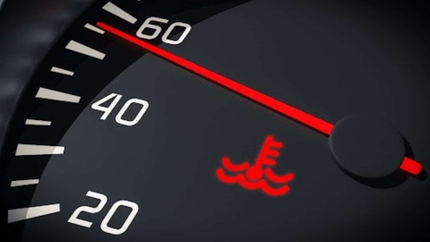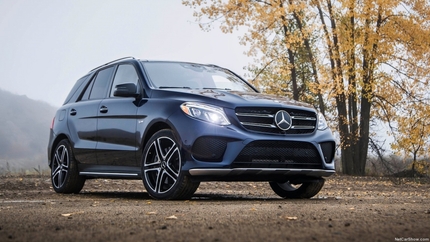Since Mercedes-Benz brought us the W202 in 1993, the C-Class has been synonymous with usable and dependable European luxury at a reasonable price point. The smallest four-door in the lineup until recently, the C-Class has served not only as a useful point of market penetration for Mercedes but also as a versatile platform for experimentation. The W205-chassis C-Class, introduced in 2014, was no exception, as it presented buyers with a host of new and innovative features and improvements borrowed from vehicles tens of thousands of dollars more expensive.
Nearly a decade on, we now see just how versatile the fourth-generation C-Class can be. Opt for a C300 Luxury, C400, or even a C350e as a daily commuter, a C63 or C43 as a backroad titan, or maybe a C300 Sport if you can’t decide between them all. The W205 chassis has a lot to offer for any interested party, so use the resources in this buyer’s guide to determine exactly which W205 Mercedes C-Class is right for you.
Mercedes-Benz C-Class History Lesson
The W202 C-Class was the first Mercedes to bear the “C-Class'' name officially, but with reference to sizing and location in the market, some will argue that the W201 Mercedes chassis is the real origin of the namesake. The W201 was a relatively pedestrian sedan with a host of odd traits for the time period; drive one in traffic even today, and you’ll likely be asked why the driver’s side mirror is a completely different size and shape than the passenger side or why the automatic climate control’s scroller looked like something out of a TV game show.
Despite its originally unexciting underpinnings, the W201 would go on to be relatively pivotal in Mercedes-Benz’s history. In their first production car designed with help from AMG, engineers in Stuttgart took their stout and reliable 2.3L four-cylinder, worked it over with legendary tinkerer Cosworth, and shrouded the cammed and energetic powerplant in clever suspension and motorsport-like aero. The W201 190E 2.3-16 “Cosworth,” as we know it, is one of the most legendary sedans to come into DTM racing and a perfect example of its era.
With the W202 C-Class, we saw the “C” namesake emerge, originally as a boxy, soft, and efficient commuter with elegant styling. Shortly after, the C36 and C43 AMG twins debuted as the first two products of the fresh AMG-Mercedes merger. Moving the now-legendary tuner in-house, the W202 saw smoothed bodylines, the legendary Monoblock wheels we know today, and obtusely over-engineered engines crammed into the relatively relaxed and comfortable styling of the new C. In 1993, the W202 C36 did 0-60 in less than 6 seconds due to its 3.6L inline-6, which was good for nearly 280 hp (relative to the 240 in the US-market E36 M3 of the time, which would come a few years later). These cars were taken from the assembly line as a C280, received the necessary accouterments, and left the house as a legend.
In 1997, the C43 took the formula even further; 0-60 came in just 5.7 seconds due to the smooth and oozing torque of the 306 hp, bulletproof 4.3L V8. This would be the first of many legendary Mercedes-Benz vehicles to bear a V8 in the tiny C-Class frame, always with a little “AMG” adorning the top corner of the trunk lid. Without the C-Class, we may not know the savage force of AMG performance stuffed into a comfortable sedan the way we do today.
With the C-Class family, however, the bar extends beyond solely performance and pedigree. The W202’s 2.3L supercharged four-cylinder offered at the bottom trim level was good for nearly 30 miles per gallon on the highway in the mid-90s, a number respectable for any leather-adorned, hefty sedan today, and these engines can still be found in impeccable mechanical condition today. The later W203 would see this same engine crammed into the unique C230 hatchback with a manual transmission, one of the only natural-born rivals to the BMW 318TI ever made.
It’s at that point we see the exact formula still used in the small Mercedes today. You can still get the plucky little turbo four-cylinder, and there’s a fire-breathing V8 AMG product at the top, with a mid-ranged 6-cylinder sandwiched in between. It’s arguably the most versatile class Mercedes offers, and we’re all the beneficiaries of that. The only difference is now, there's a lot more tech and safety involved.
Mercedes-Benz W205 C-Class Overview
The formula of the W205 remains similar to the previous-generation W204 on paper but, peek beneath the surface, and it’s clear that the W205 and its predecessor have little in common. The chassis even holds a few surprises you may not expect from a Mercedes.
Gone are the days of natural aspiration in the C-Class. The W205 cuts displacement and adds boost, offering the all-new M274 turbo-four, a twin-turbocharged M276 V6, and the twin-turbocharged M177 V8 of the C63 and C63S (using a “hot vee” layout to minimize lag). We also see a hybrid introduced in the C350E, combining the M274 and electrical drive to make for a formidable daily driver that will seldom visit the pump.
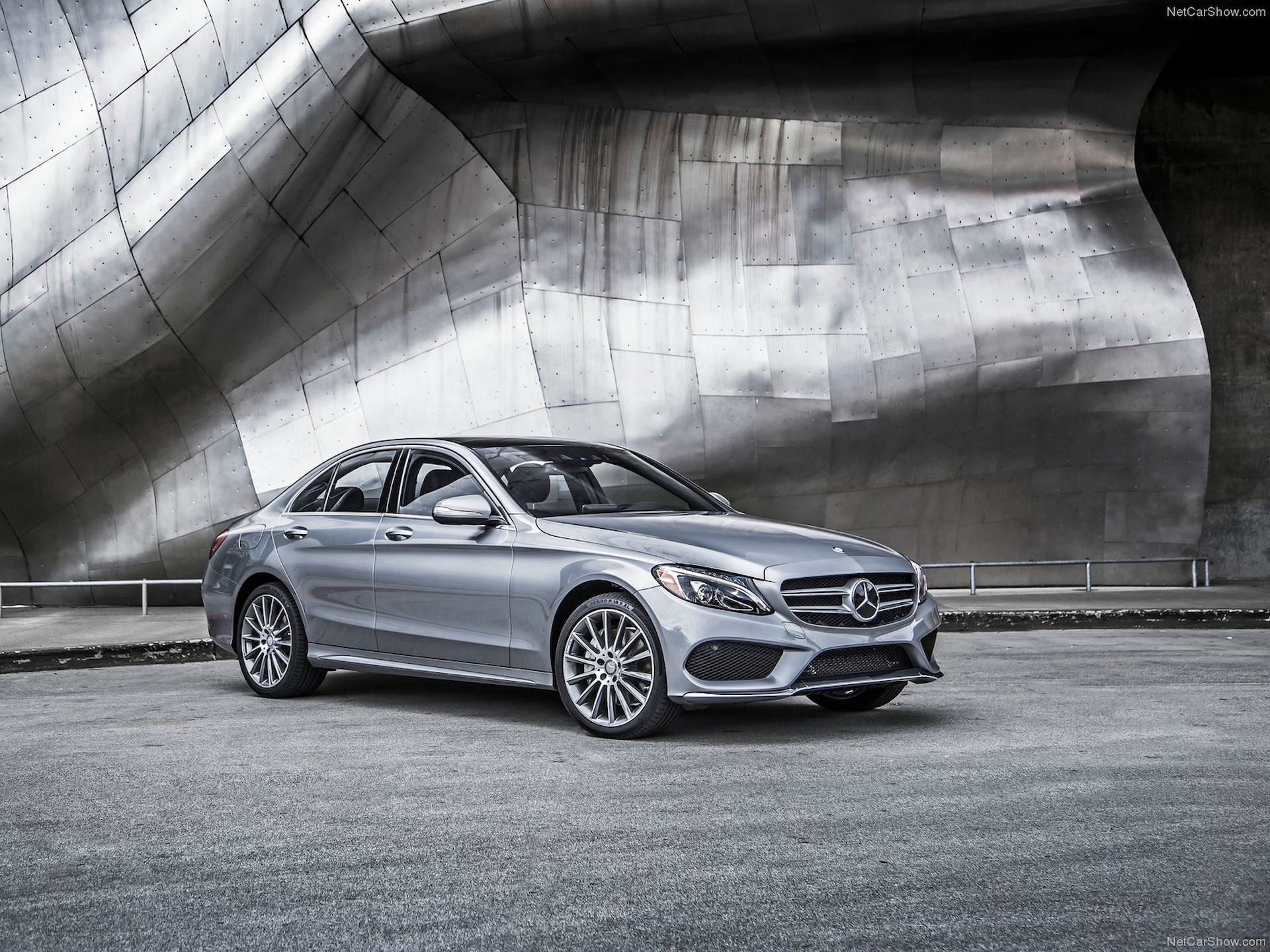


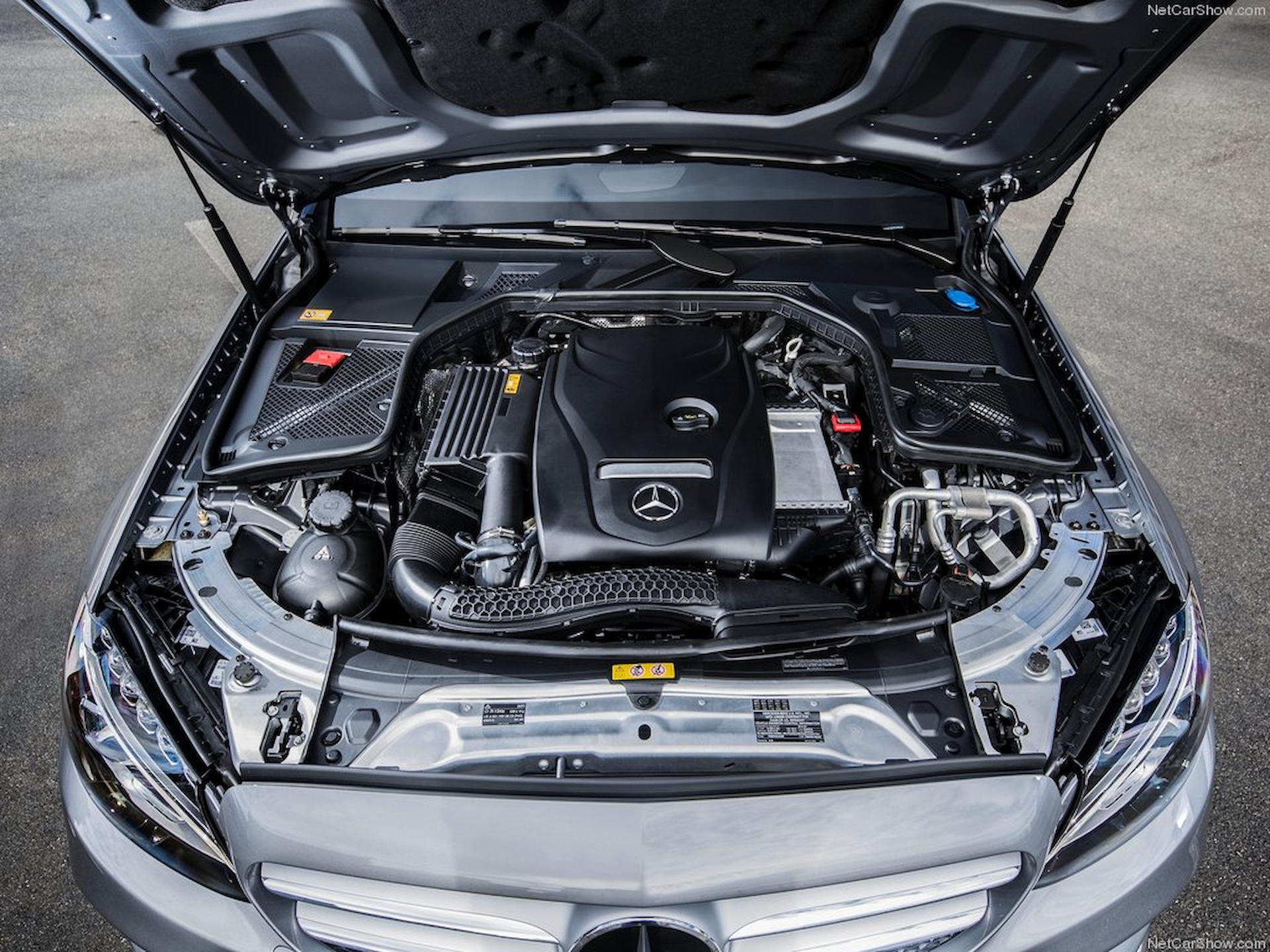
Fuel economy across even low-trim vehicles has increased thanks to clever gearing and new Piezo-style injectors to accurately manipulate fuel flow. The big-body sedans put up respectable numbers for the class across the board, from four-cylinder to eight, while also providing excellent power figures for its class.
The W205 entirely changes front suspension geometry, using double-wishbone front suspension instead of the MacPherson design found in previous generation Cs. The change significantly helps to improve cornering dynamics despite the chassis’ weight gain. When optioned with the Sport Package, the base C300 has strong numbers for its size, recording 0.91G on the skidpad with factory-provided Pirelli tires. Braking figures are similarly impressive as the C300 Sport can drop anchor from 70 to zero in just 157 feet, besting its class via the four-piston, factory-equipped ADVICS calipers sold as standard across the Sport-optioned C300 as well as the C400, C450, and C43 AMG.
Mercedes W205 C-Class Variants |
|||||
|
Model |
Engine |
Transmission |
HP/TQ |
EPA Fuel Economy (City/Highway) |
Displacement |
|
C300 |
M274 Inline-4 Turbo |
722.9 or 722.9 4Matic (7-Speed) 725.0 or 725.0 4Matic (9-Speed) |
241 hp/273 ft-lbs |
25/33 (722.9) 24/31 (722.9 4M) 24/33 (725.0) 23/32 (725.0 4M) |
2.0L |
|
C350e |
M274 Inline-4 Turbo Hybrid |
722.9 (7-Speed) |
275 hp/443 ft-lbs |
51 MPGe combined city/highway |
2.0L |
|
C400 |
M276 V6 Biturbo |
722.9 4Matic (7-Speed) |
329 hp/354 ft-lbs |
21/28 |
3.0L |
|
C450 |
M276 V6 Biturbo |
722.9 4Matic (7-Speed) |
362 hp/384 ft-lbs |
21/28 |
3.0L |
|
C43 |
M276 V6 Biturbo |
725.0 4Matic (9-Speed) |
362 hp/384 ft-lbs |
20/28 |
3.0L |
|
C63 |
M177 V8 Biturbo |
722.9 MCT (7-Speed) 725.0 (9-Speed) |
469 hp/479 ft-lbs |
18/25 (MCT) 18/27 (725.0) |
4.0L |
|
C63S |
M177 V8 Biturbo |
722.9 MCT (7-Speed) 725.0 (9-Speed) |
502 hp/615 ft-lbs |
18/24 (MCT) |
4.0L |
We did see a mid-cycle refresh starting in 2018, which can be tricky to detect from the outside of the vehicle aside from a new grille and some stylistic changes; the big ones are the introduction of the 9-speed 725.0 transmission as well as a full redesign of the infotainment system inside of the car.
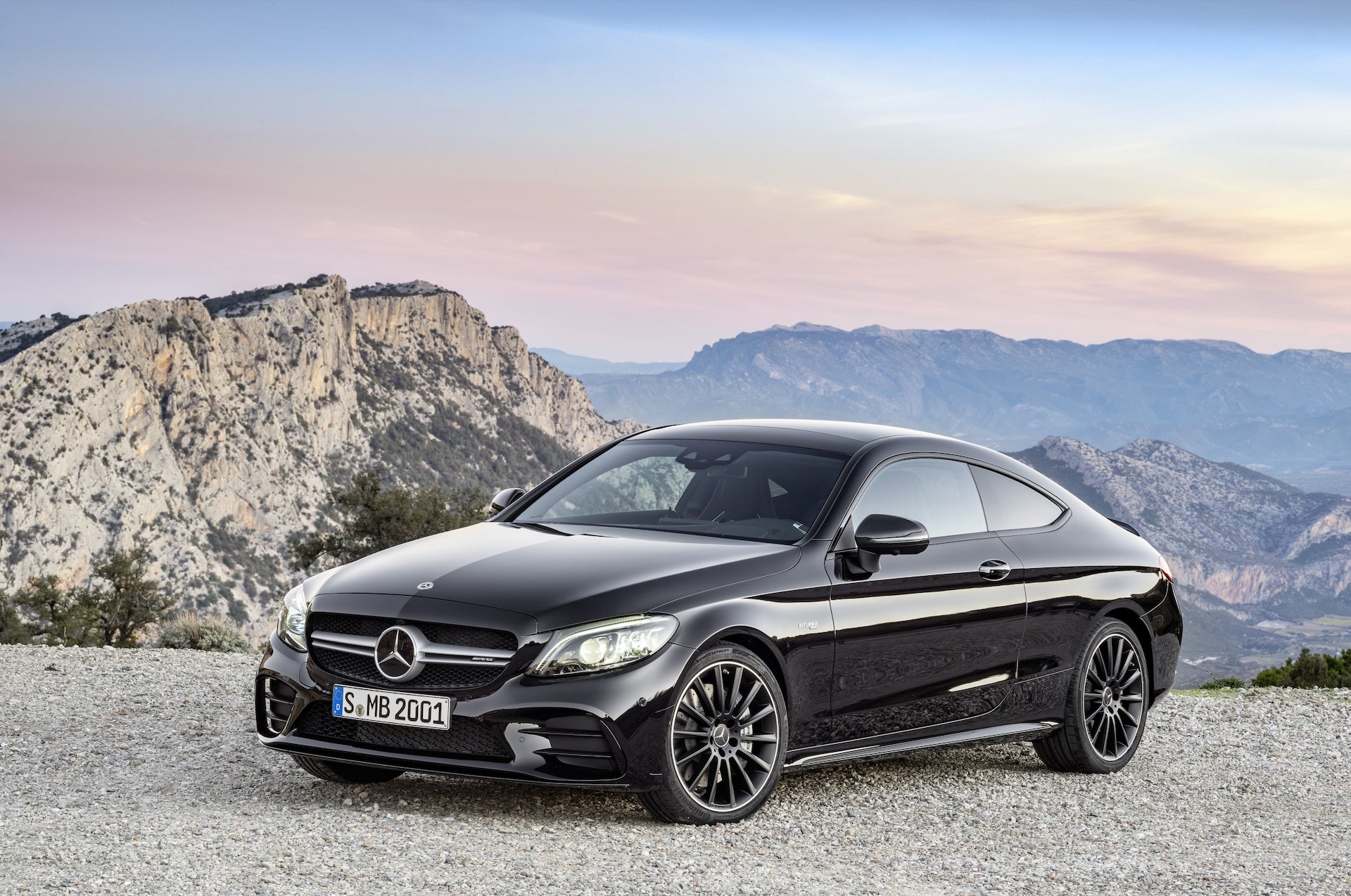
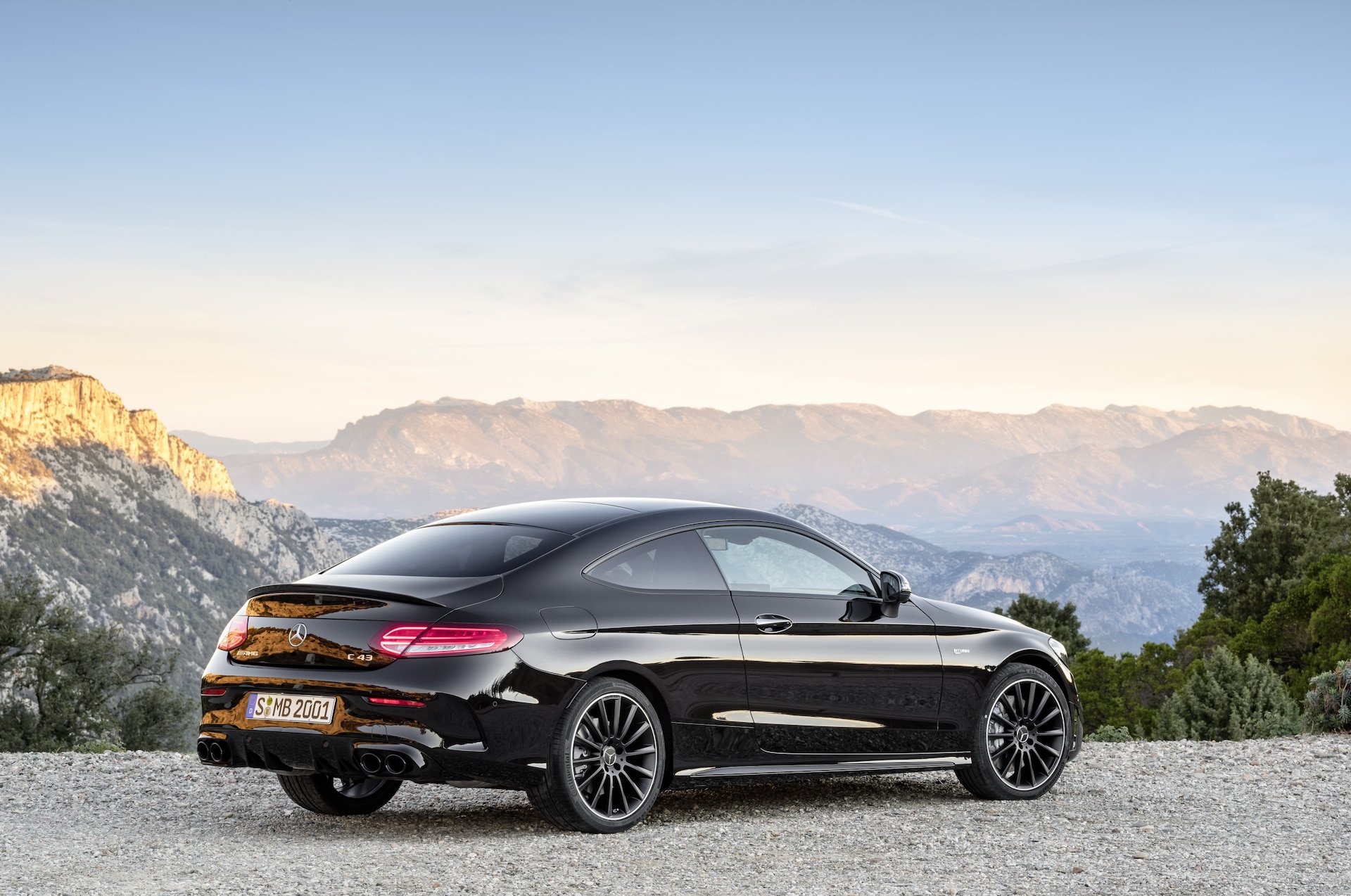
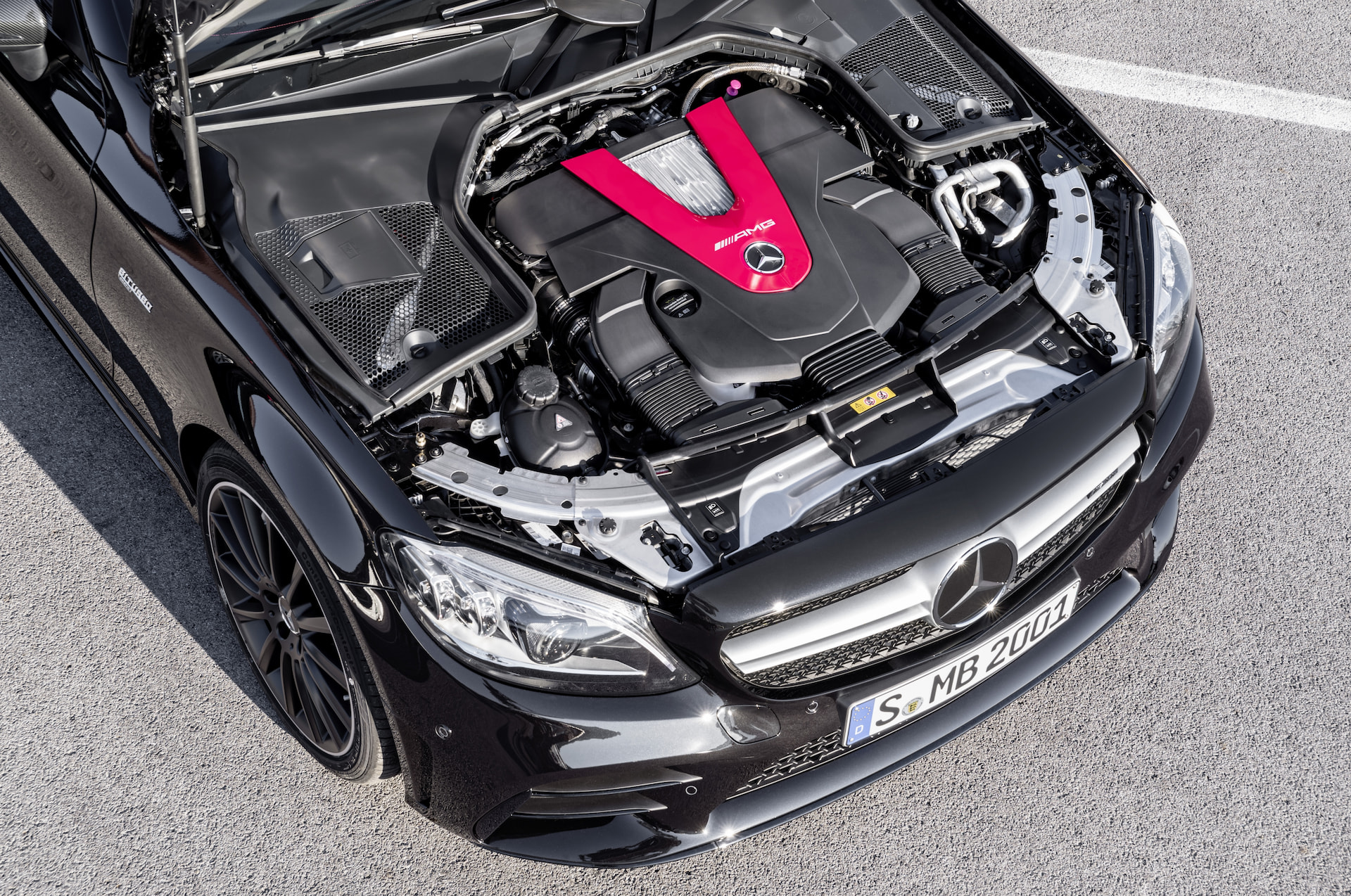
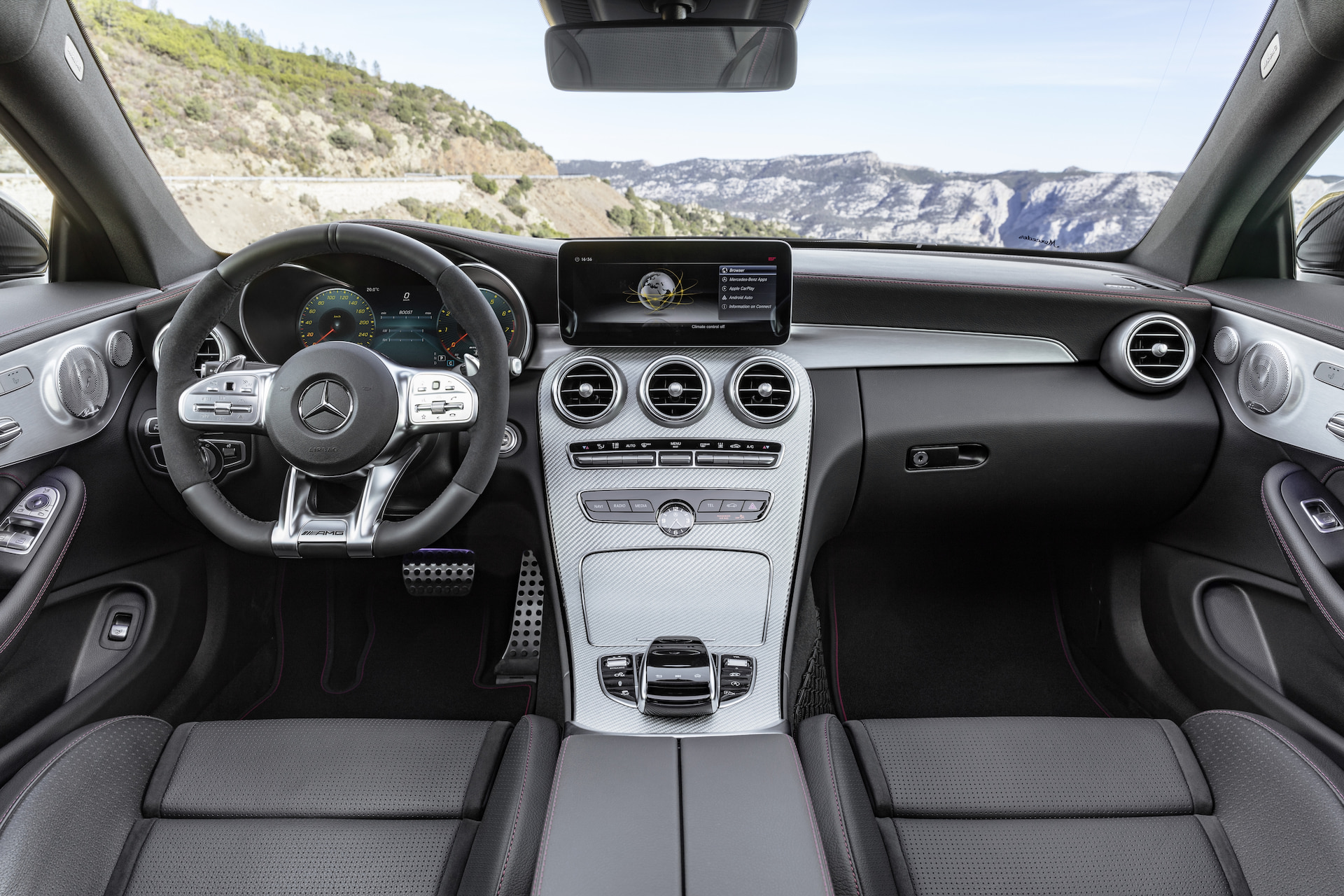
Mercedes-Benz W205 Engines
The W205 presented buyers with three entirely new engines for the C-Class coming from the W204 and introduced a mid-range AMG option and an upmarket option package for the top-spec AMG for the first time.
The M274 single-turbo four-cylinder serves as base equipment for the W205 in the C300, producing a healthy 241 hp and 273 ft-lbs of torque. Despite an increase in combined fuel economy to nearly 30 MPG, the 2.0L M274 unit in the W205 increases power output by over 18% from the outgoing W204’s 1.8L turbo-four and increases torque by 20% to make the C300 even more useable in an everyday driver role. Zero-to-sixty comes in just over 6 seconds in the base W205, nearly a second faster than the previous W204 C250 and on par with class-equivalent offerings from Audi and Lexus. Despite being the weakest engine of the W205 lineup on paper and a relatively mundane four-cylinder, there’s a lot to the M274.
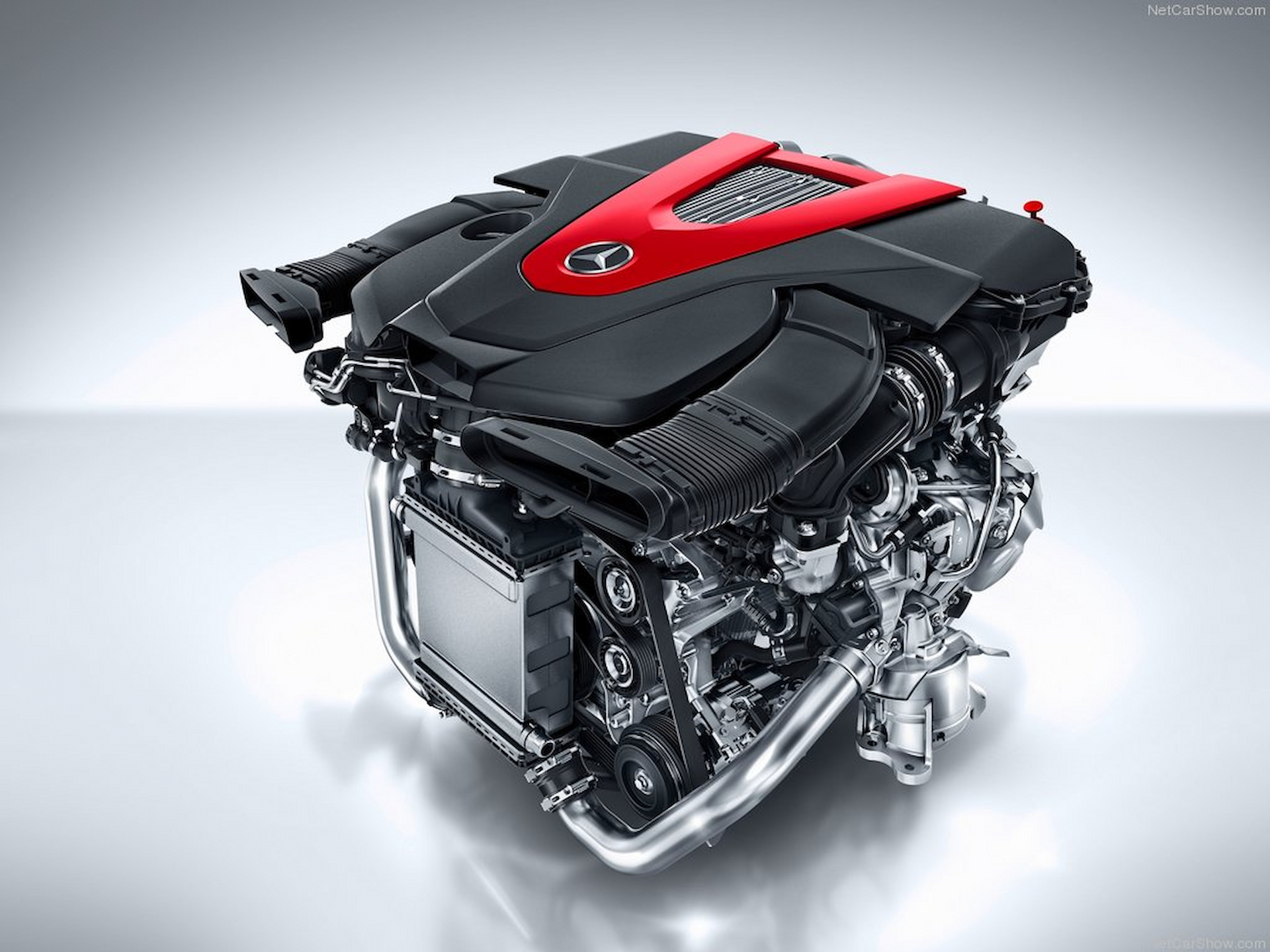
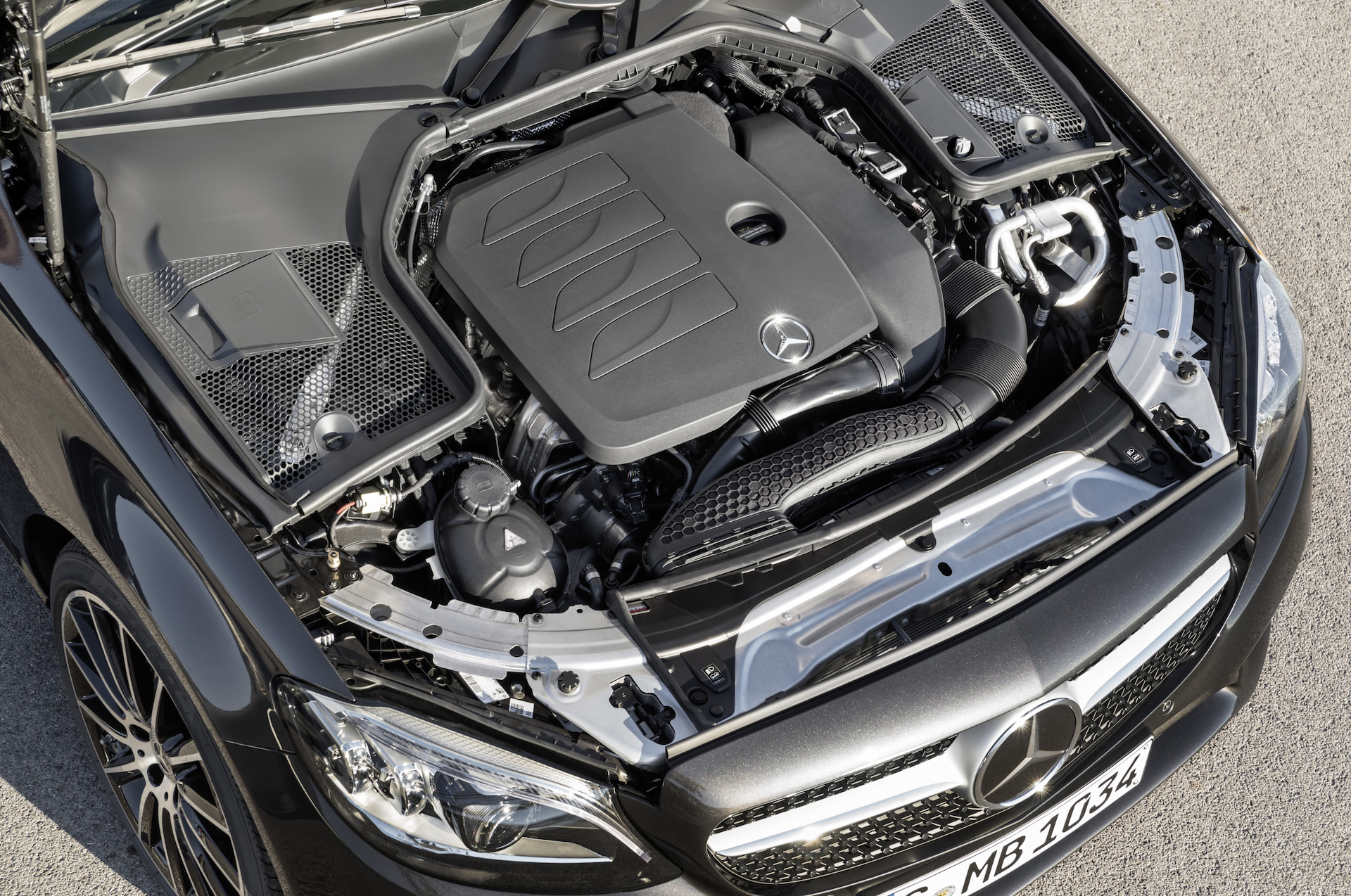
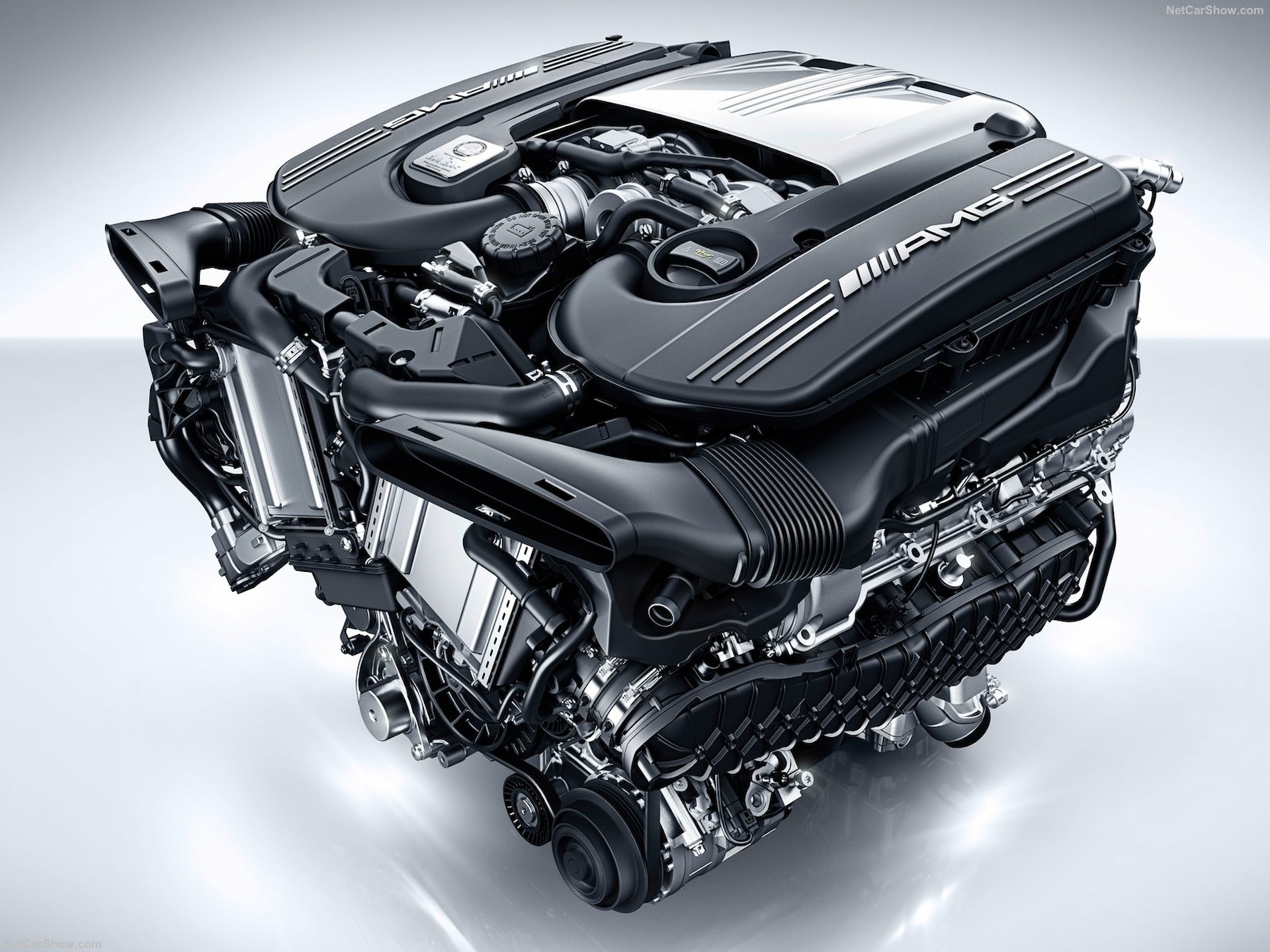
All new for the W205 was a mid-range AMG offering when the C43 AMG rolled around in 2017. Originally brought to the marketplace as the C400 in production year 2015, then as the C450 in 2016, and eventually as the C43 in 2017, these models offered a potent driveline perfectly sandwiched between the standard C300 and the fiery C63. The M276 twin-turbo V6 remains consistent across the C400, C450, and C43, using direct injection and heaps of boost to pack power into the largely rear-biased, 4Matic AWD systems. Zero to sixty is a rapid 4.1 seconds in the 2019 C43 with the nine-speed, less than a half-second slower than the W204 trim-topping C63, and two-tenths quicker than a similarly-priced and optioned Audi S5 from the same year. Offered at around $60,000 base, the C43 effectively penetrates the market for prospective Audi S4 and S5 buyers and M-tweaked BMW shoppers.
The range-topping C63 and C63S pack the most significant punch thanks to the all-new M177 V8. Effectively, two of the M133 four-cylinder engines from the potent CLA45 and GLA45 AMG melded at the crank; the twin-turbo four-liter V8 makes 469 hp in the C63 and a hair over 500 hp in the C63S while delivering 479 ft-lbs (and 516 ft-lbs in the s) of torque. That allows the C63S to sprint from 0-60 in just 3.7 seconds and means the long roof can consume a quarter mile in just 11.9 seconds while keeping occupants wrapped in luxury. That’s just one-tenth slower at the drag strip than a same-year AMG GT, though the strip can be tackled with the whole family in the back with the big-body C. Although the turbochargers muffle the sound more than the outgoing M156, the M177 serves as an excellent final salute to an era of V8 Benzes
Mercedes-Benz W205 Transmissions
While the engines mentioned above are each respectable in their own right, many performance improvements across the W205 are due to transmission changes across the lineup.
The 722.9 7G-Tronic automatic returned in the W205 for early-production models, emphasizing the narrative of “don’t fix what isn’t broken.” This seven-speed, torque-converted 7G-Tronic unit has seen little adjustment other than minor tweaks and improvements in tuning since its original conception to maximize fuel economy and in-gear acceleration. As a result, all M274 vehicles made up to the 2017 model year and the C400 and C450 utilize the 722.9. The C63 and C63S also use an AMG-tuned “Speedshift” wet-clutch variant of the 722.9, prior to the platform-wide switch over to the 9-speed with 2018 facelift for 2019-production-year cars.

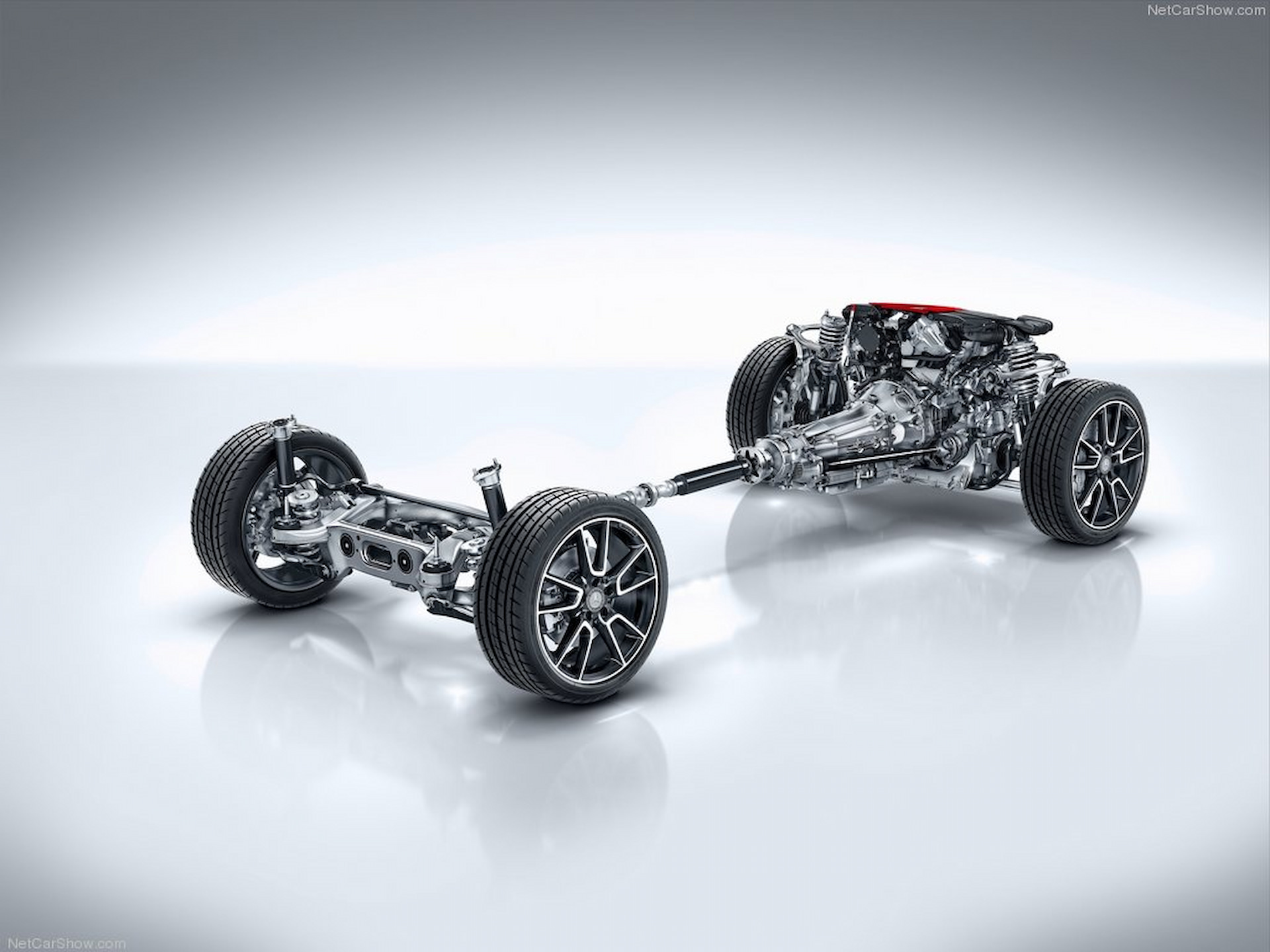
2019 model year cars sporting the 725.0 “9G-Tronic” transmission include the C300 and M276-Biturbo C43, as well as both of the C63 AMG variants. Adding two more forward gears from the previous 722.9, the 9G-Tronic 9-speed effectively helps to keep equipped vehicles in boost from gear to gear even better than its predecessor was able to, helping to chop acceleration times even further.
Mercedes-Benz W205 Suspension & Brakes
When discussing the suspension options available for the W205 chassis, the largest talking point is generally a migration away from air suspension as factory equipment at the maximum trim level and the integration towards air suspension across all engine options. Gone are the days of finding a comfortable air suspension solely in flagship vehicles; the W205 offers AIRMATIC across most trims. The C300, for example, can be had with or without air suspension regardless of whether or not the vehicle uses 4Matic all-wheel-drive or not, while the C450 came from the factory with standard front suspension and air springs in the rear (this is option code “489”). For vehicles optioned and sold without the AIRMATIC package, the Bilstein-designed Dampmatic II strut promotes revised internal valving, continuously adjusting over uneven and undulating surfaces to silence as many small and sharp movements as possible. Across both suspension systems, the “ABILITY SELECT'' system allows drivers to adjust the damping characteristics of their vehicle on the fly.
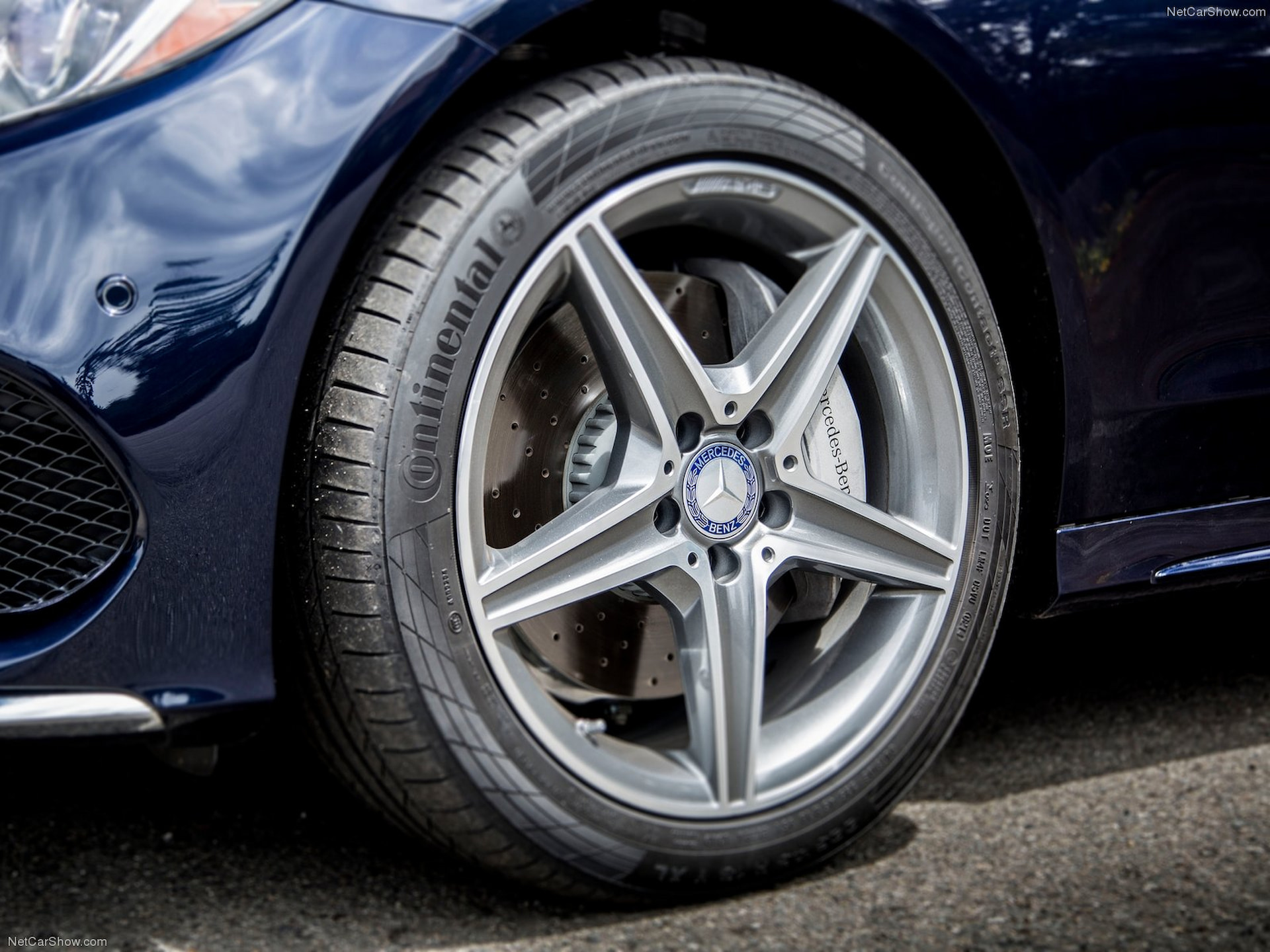
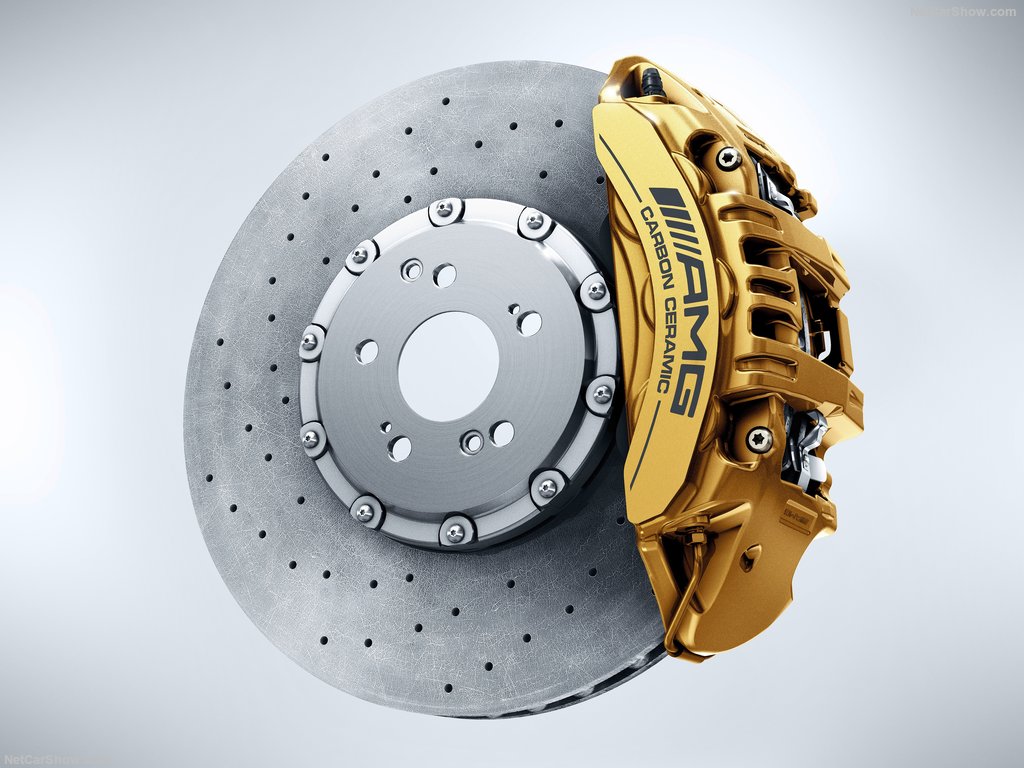
Slowing and stopping the W205 is one of a few different brake combinations. From a simple single-piston front caliper on the base and luxury C300 to the colossal monoblock 6-piston monoblock of the C63 and C63S, there’s a ton of stopping power kept in the W205 family (as well as a lot of potential for OEM upgrades). Our W205 Brake Guide will analyze the technical developments found across the W205 and the engineering behind each style of caliper used to help better understand the chassis, but overall performance is broken down simply. The midrange caliper option, an ADVICS four-piston monoblock front caliper standard on the C300 Sport (unpainted), C43 (painted), and the C400/C450 (painted), lets the C300 Sport stop from 70mph in just 157ft—two feet shorter than a Mercedes SLS AMG supercar equipped with carbon-ceramic brakes.
Where To Buy A Mercedes-Benz W205
As the W205 chassis has been around for a few years now, the majority of normal web outlets should yield a plethora of options for purchase; from Autotrader to CarGurus, Facebook to Craigslist, the W205 is out there at all trim levels.
The best thing a prospective buyer can do to ensure that their search yields a successful purchase is to educate themselves on the chassis and its inherent pros and cons so that the considered example can be adequately inspected and observed. Along with this guide, we’ll have more in-depth looks at each of the major systems within the W205 shortly. Be sure to use all the tools at your disposal to know that the W205 you found is right for you.
How Much Does A Used Mercedes-Benz W205 Cost?
With the W205, the market sees a fair amount of variation in cost based on the trim level and option package, as well as the mileage and year of the vehicle at hand. Because the W205 has been around since 2015, early W205 chassis carry a fraction of the price of later model years.
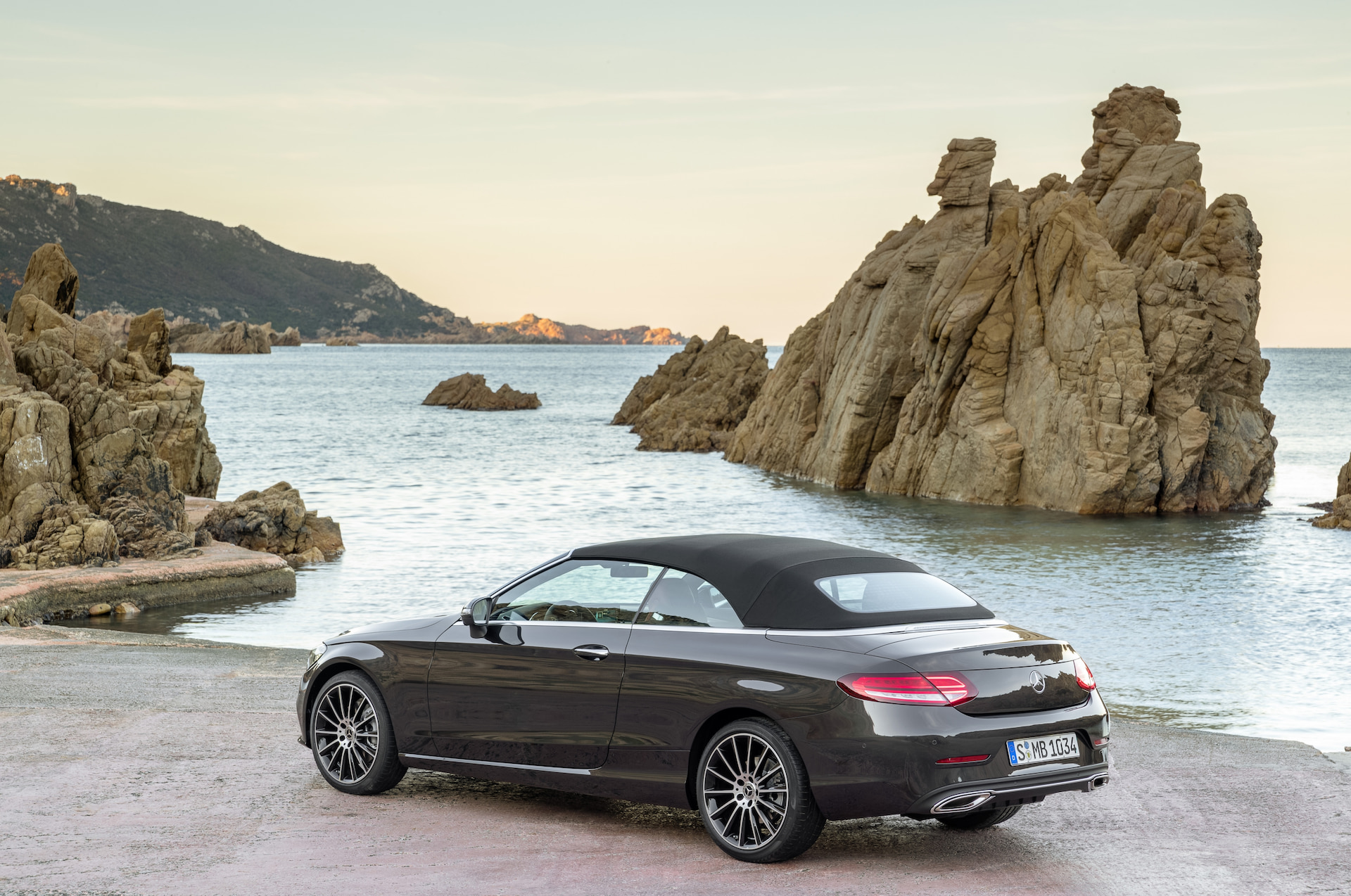
Using a median of around 50,000 miles for reference, you can expect to find your W205 around the listed price points at the time of writing.
2015-2021 C300: $15,000-$36,000
2016-2018 C350e: $15,000-$30,000
2015 C400: $17,000- $25,000 (not available following shift to C450 in 2016 Model Year)
2016 C450: $22,000-$34,000 (not available following shift to C43 in 2017 Model Year)
2017-2021 C43: $27,000-$50,000
2016-2021 C63/C63S: $45,000-$75,000
How Reliable Is The Mercedes-Benz W205?
Reliability will vary in the W205 pending the year and engine selected, so it is again recommended to familiarize yourself with any faults or merits for the trim of C-Class you’re after. The most consideration should be put into any purchase involving the M274 engine, as it has already shown some prominent faults in the few years it has been in production.
At a transmission level, we have a bit less nuance. 722.9 rear-drive models can be a fairly reliable unit when they receive frequent fluid and filter changes. At the same time, their 4-matic counterparts can be notoriously more difficult due to bearing and transfer case issues.
The 725.0 9G-Tronic is still relatively new and somewhat uncharted territory in comparison. Still, it has been a reliable unit aside from the odd report of forceful or jerky upshifts and downshifts due to coding issues.
On an engine-by-engine basis, things get more complex. One of the only things universal across all of these engines at the moment is the issue of oil being wicked through the engine wiring harness and causing damage to other ancillaries, but more on that below.
M274
Early M274 four-cylinder cars are reported to have a wrist pin issue, leading to piston failure at no set failure interval (though most have seemingly occurred under low mileage) on cars manufactured before April 20, 2015. You can check whether or not an engine falls under the affected range by simply inputting the vehicle’s VIN into a VIN Decoder site. From there, you gather the engine serial number and compare it against the M274 wrist pin revision window; engines as of 274 9…E0 043259 will have the revised pins.
Aside from that weak point, the breather system on the M274 is pricey, unreliable, and challenging to replace. As of this article’s publishing, Mercedes has extended the warranty on this system for M274 cars to 15 years/150,000 miles on vehicles presenting a P052E71 engine code that’s often synonymous with this failure. Beyond those faults, it's your typical small oil leaks, services, and general hiccups.
On the opposite end of the spectrum, the M274’s unique PCV breather system is highly effective. Direct-injected engines are prone to carbon buildup behind the intake valves due to the recirculatory method used to burn off oil vapors induced by crankcase pressure. The breather system on the M274 vents back into the crankcase rather than the intake manifold or throttle body, allowing things to stay much cleaner than most direct-injected engines.
As for the oil in the wiring harness, it’s not unique to the four-cylinder and affects the vast majority of Mercedes engines. Oil intrusion from the camshaft adjuster magnets and from the camshaft position sensors can result in a surprisingly costly repair. There are two of each on the M274, and the issue stems from at least one of these four sources leaking engine oil through the sensor and into the engine wiring harness. Through the capillary effect, the engine oil is wicked upward through the engine harness into the ECU and the various other branches of the harness until an ambiguous code eventually appears and won’t go away. It’s often something like an oxygen sensor code that remains following a replacement.
The repair for a full new harness and any other sensors full of oil (including the ECU) can be staggering. Fortunately, our Cam Solenoid Protection Kit remedies the sensors at the front of the engine once and forever with the addition of sacrificial pigtails to trap any oil, and our Cam Position Sensor Kit can keep the same issue at bay with a straightforward replacement at the top of the engine every 60-70,000 miles or so.
M276 Biturbo
The M276 is stout in the W205, showing little to no serious failure points despite being around for a few years. As with most direct-injected engines at this point, an owner may have to do the odd set of plugs and ignition coils on occasion (a bit of a pain when the easiest method for doing so is the removal of the entire air intake housing) and owners should be careful to use a high-quality, OE option. When supply dwindled on these coils a while ago, even Mercedes dealers were stuffing in whatever coils they could find, including low-dollar aftermarket units, which can discharge when the vehicle is unlocked, resulting in combustion within the intake manifold or a “dry fire,” causing serious damage to the PCV system and intake manifold as well as adding wear. A product from either Bosch or Genuine Mercedes is a must.
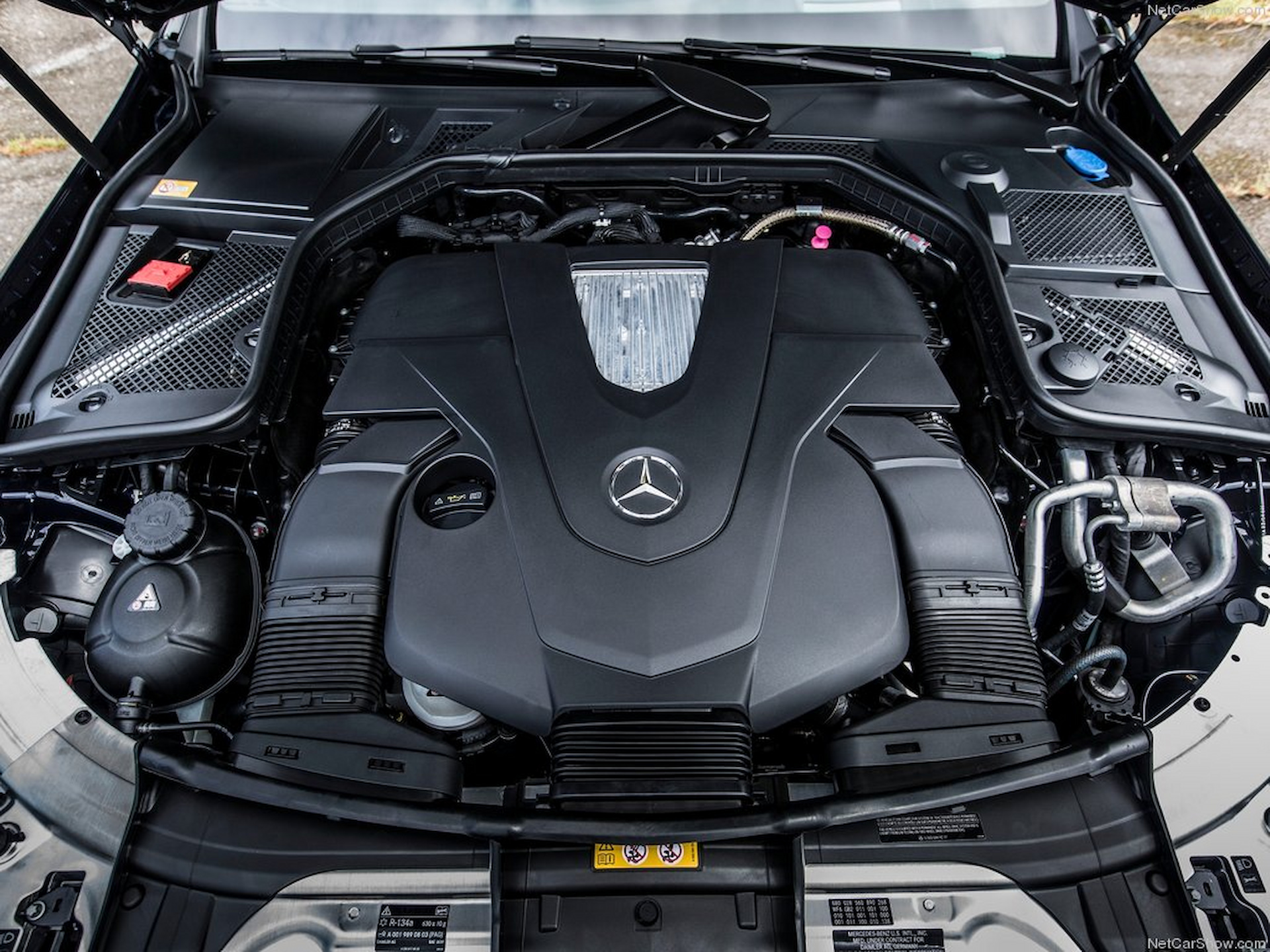
Another bigger one for M276 is the pulse wheels on the camshafts. While these are just starting to become documented more frequently and may not be a huge concern, they are a bit troubling; these are how the camshaft position sensors read engine timing, and the pulse wheels are simply press-fit onto the cams. When they come loose, the only correct remedy at this time is to replace the entire camshaft. And on the topic of timing issues, it isn't uncommon to replace a camshaft adjuster as the vehicle ages. This is generally going to be the unit on the same camshaft that drives the high-pressure fuel pump.
On the M274’s issue with oil entering the electronics, the M276 is not immune. Our Cam Solenoid Protection Kit contains the four sensors needed and retroactively adds a sacrificial pigtail from the previous generation of engines to prevent the issue for good, and our Cam Position Sensor Repair Kit is a quick and easy way to protect yourself by replacing every 60-70,000 miles.
Between these and the odd sensor, accessory, or PCV replacement, owners should have a pretty easy time keeping the six up and running. Early models served as some of the first mated to the aforementioned 9G-Tronic and received some complaints of tough gear changes in Sport Plus, but a software update has remedied this issue.
With the M276, we generally see more praise than negative prose. The smooth engine delivers massive power and torque for the price point, responding to standard turbocharged modifications well. If anything, the fuel economy gets criticized, although a 30 MPG average from a reasonably-sized V6 with two turbos is on par for the market.
M177 Biturbo
The M177 delivers big power for its size and has been proven to handle more. As of its current age, there isn’t much-reported maintenance or fixing to be afraid of, with most reports noting coil packs and plugs versus the head bolt ordeal of the earlier M156 in the W204 C63.
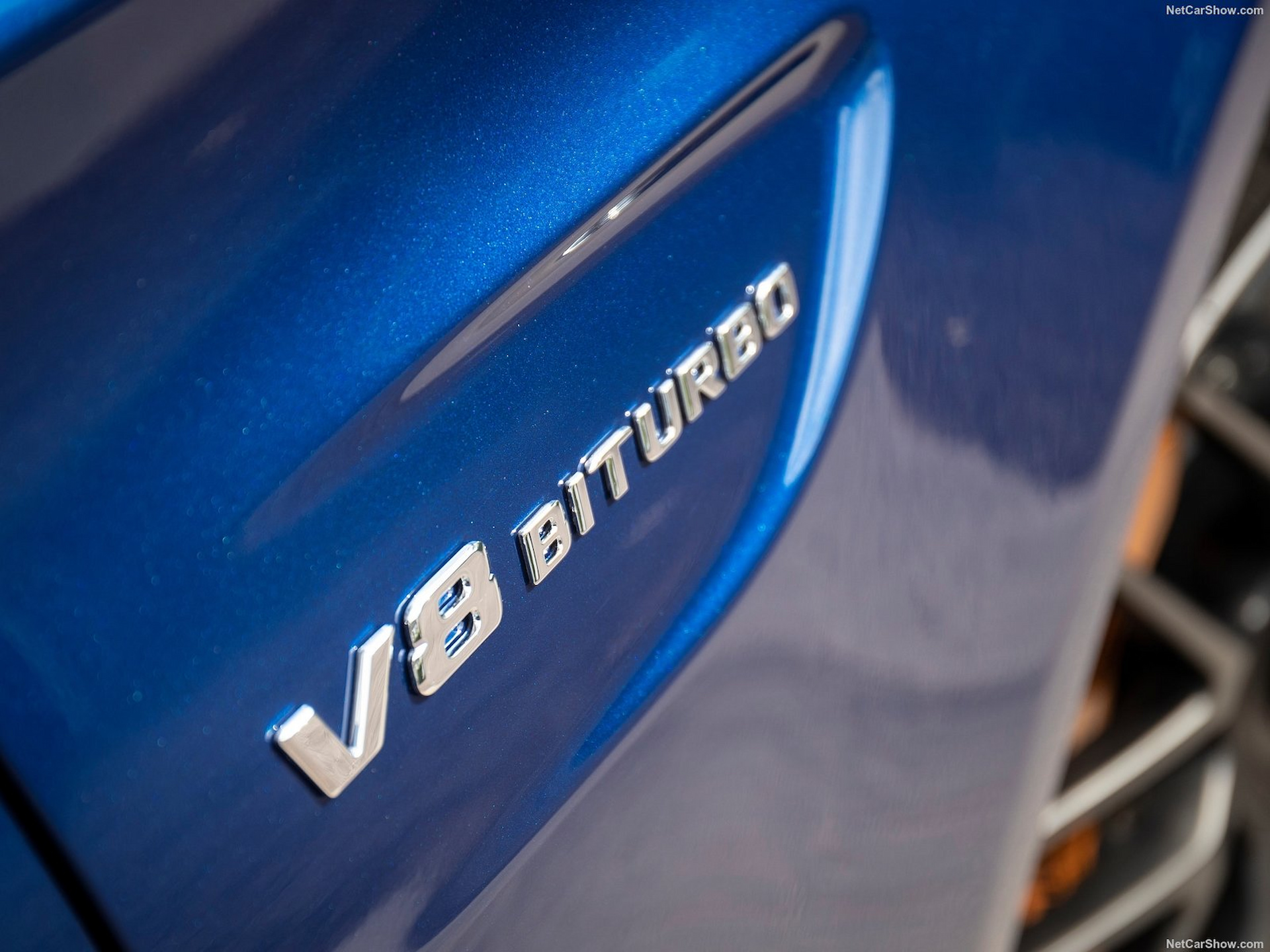
Returning to the wiring loom oil intrusion, we see a nearly identical issue and resolution. Our V8 Biturbo take on our Cam Solenoid Protection Kit contains the four sensors needed and retroactively adds a sacrificial pigtail from the previous generation of engines to prevent the issue once and for all, and our Cam Position Sensor Repair Kit is a quick and easy way to protect yourself by replacing every 60-70,000 miles. However, its packaging is pretty tight in the W205 C63 and C63S; simple services may be a bit tougher, as the engine bay is congested and a bit complex to deal with.
How To Inspect A Mercedes-Benz W205 Before Purchase
In any instance and with any vehicle, it is wise to consider a pre-purchase inspection from an authorized and trusted third party to catch anything you may not be able to with your naked eye. Generally very affordable, a “PPI” for a couple of hundred dollars will be massively worth it when considering a car that could cost thousands to fix if an issue becomes apparent.
Know Your Engine
Each of the engines in the W205 is fairly bespoke regarding failure points, driving characteristics, and power delivery. The M274, for example, has the aforementioned wrist pin issue; when listening for this and assessing how smoothly the four-cylinder runs, keep in mind that the Piezo injectors are pretty noisy in the engine bay and can be confused by many for a top-end issue. Familiarizing yourself with typical running noises for the engine can help indicate a more serious issue.
Brakes and Tires Cost Money
Tires and braking equipment aren’t always inspected before purchase, as they’re considered secondary to an expensive engine issue. The C63 has giant monoblock-style calipers, so a set of pads and discs can run north of $1,000 for replacement. If the tires also need to be replaced, expect to double that amount at a minimum. Simply taking a glance to assess the life of the parts that keep you on the road ensures your safety immediately following your purchase and the cost of your investment.
Unlike in previous C-Class models, though, the cost of these wear items doesn’t decrease a ton when moving downmarket slightly. The C300 Sport, C400, C450, and C43 all use the same four-piston front caliper and slotted disc, which is still some serious hardware despite the factory equipment on the C63 being a bit heftier. A set of pads, rotors, and replacement performance 19-inch tires can quickly run a bill of over $2000.
Good Suspension is Complex Suspension
The double-wishbone structure integrated into the W205’s front suspension is also a serious bit of kit. The inherent layout of the double wishbone helps to create consistent contact between the surface of the tire and the road even under high load, meaning the pitch and roll of the wheel under load stays more consistent than with an alternative MacPherson design.
With the switch to a double-wishbone comes more bushings and more ball joints to help promote adequate movement. Naturally, as these vehicles and their parts age, this will mean more pieces of rubber to go bad. Giving a careful listen during the test drive and getting underneath your prospective W205 to inspect the suspension can save a good deal of money down the road, and getting the vehicle onto a lift during a PPI can further ensure any future issues are caught before purchase.
When looking at the Mercedes C-Class, we see a distinct standard held from the W201 to the W205: offer as much luxury, performance, and engineering as possible, yet maintain a low enough price point to keep the car competitive with the likes of Audi, BMW, Toyota, Lexus, or Acura. Browse the numerous reviews published since the release of the C300 in 2015, and the consensus is clear—the W205’s interior and amenities are top of the class, and the latest C-Class is a genuinely nice place to spend your time. Now, with all of this info at your disposal, you're ready for W205 ownership.
If you liked this article, be sure to follow along with our DIY Blog for more helpful guides, and then head over to our YouTube channel to find guides like these and tons of other entertaining content!


